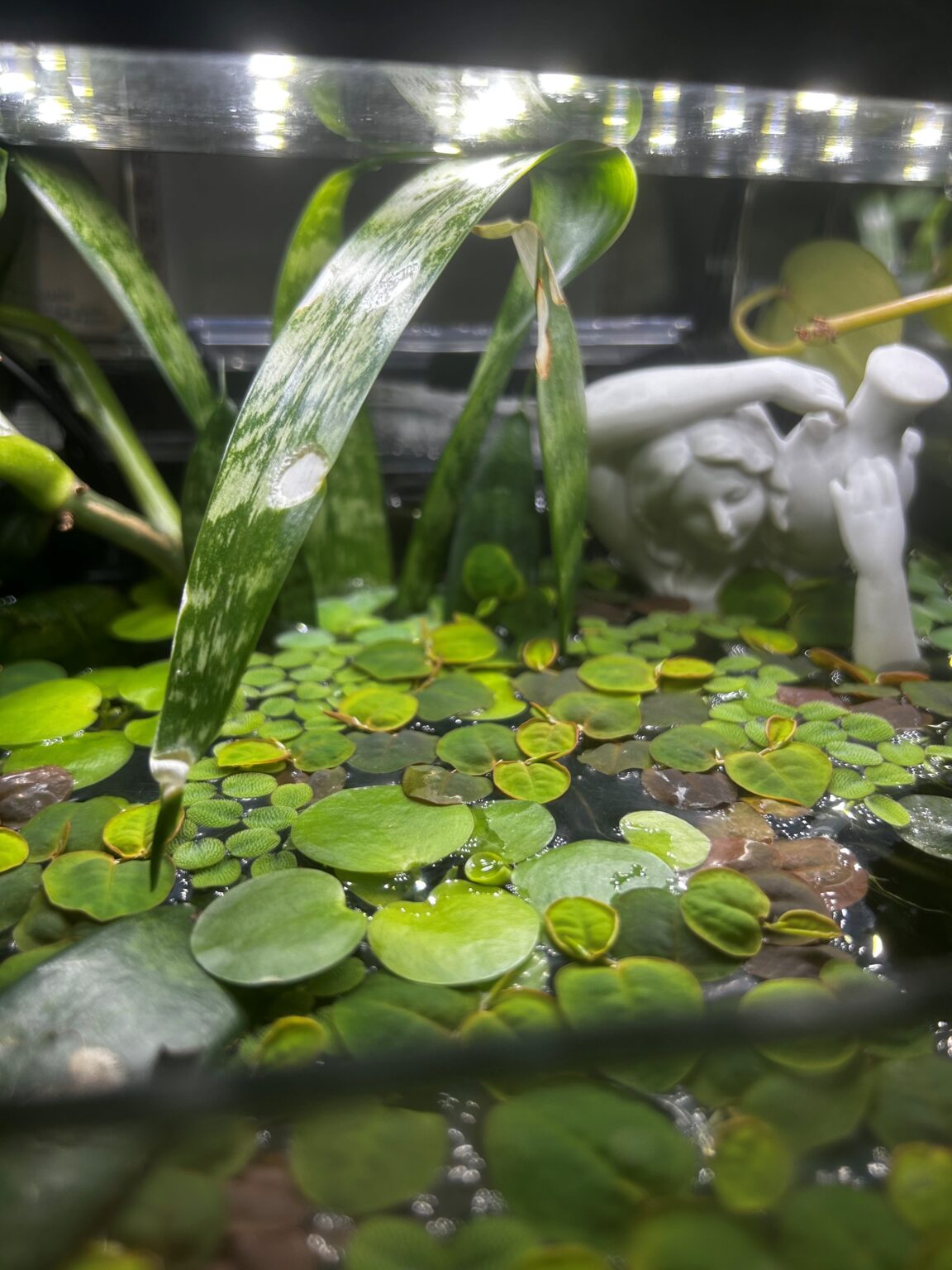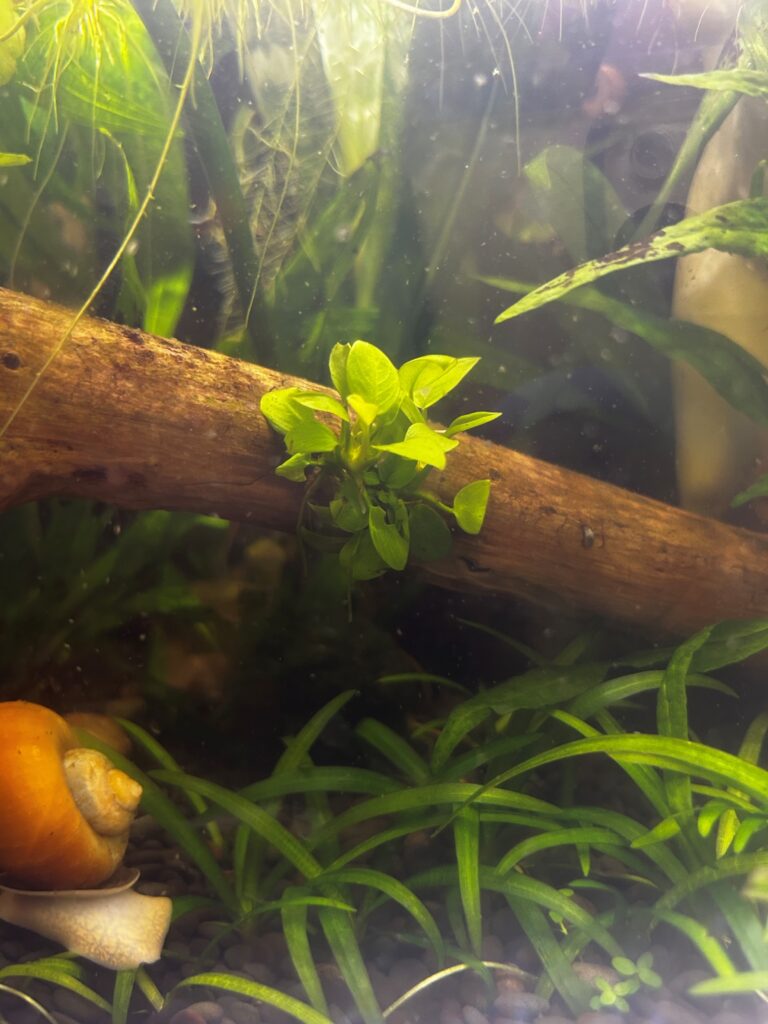
Let's Dive In!
Descend beneath the surface…
Aquatic plants can seem like a daunting expedition, but with the right plants, right setup, and a little patience they can be some of the more rewarding plants in your collection. So whether you’re trying to make a 75 gallon masterpiece or a mason jar experience for you desk, these simple principles are the foundation to early success.
Where do I begin?
Supplies
The equipment for your aquarium can be as complicated or simple as you’d like; all you need is 5 items.
1. A container
This can be an elaborate, low-iron, rimless UNS tank, or an empty Starbucks cup. It just needs to be clear/transparent and have a big enough opening for you to work with.
2. Substrate
The substrate is the media that sits at the bottom of the tank which the plants will grow out of. The budget friendly version would be plain old dirt from the backyard. Cover with sand to keep from floating. There are also inert options such as gravel and rocks, but we recommend soil for those just beginning. Those who want to get a little more advance can use aquasoil—our preference is Fluval Stratum.
3. Fertilizer
If there’s one thing we cannot get enough of here, it’s fertilizer. This won’t be as important is the first couple of weeks, but for long-term success, fertilizer is crucial! We use liquid Seachem Flourish, but root tabs are also a good option.
4. Light
Depending on where your aquarium is placed, you will need a light source. There is an overwhelmingly large selections of lights, but for a beginner with beginner plants, a regular, white grow light that fits above the tank will suffice.
5. Water
For your first plant setup, there is no need to get into the weeds about reverse osmosis water or distilled. Regular tap is usually fine for beginner plants.
Optional Supplies
Hardscape
Long, angled tweezers for easy planting
Lid
Filter
Aquatic fauna

Plants, plants, plants
Aquatic plants range in variety just like our land-loving friends. Not all aquatic plants can thrive in the same environment and there are many factors to take into consideration, including: size, growth rate, nutrient needs, temperature, and water parameters, among other things. Researching plant needs beyond aesthetics is the best way to ensure success and to not waste money killing plants.
Things to consider
Like with anything else in the plant hobby, this process is totally yours! You can customize, upgrade, and vary any way you like, but these are some helpful hints to keep in your back pocket while you plan your new setup.
1. Aquatic plant types
There are 4 major aquatic plant types: algae, floaters, submerged, and emergent.
1. Algae can be a nuisance, but if that’s your thing, it will grow on its own if not prevented—especially during the early stages. Lower lighting with shorter duration, high plant volume, and Flourish Excel will help negate algae growth.
2.Floaters are fun, but grow rapidly and will suck nutrients from the tank, so make sure to trim frequently and adjust fertilizer amount.
3.Submerged plants live completely under the water and usually have stems that can be fully planted in the substrate, or placed on top.
4.Emerged* plants are grown hydroponically—meaning the roots grow under water while the plants emerges and lives out of the water. They make stunning additions and the aquarium makes a great propagation station!
We recommend starting with one type of floater, a hardy stem plant, fast growing plants, and some low-light varieties to stick in harder to reach places.
*Some submerged plants can emerge from the surface (and even flower!) if given proper care.
2. Low-tech, high-tech requirements
While high-tech setup (aquariums using high light and CO2 injections) offer more options for plant types, they can get complicated and expensive, though they don’t have to be. Make sure the plants you’re buying don’t require CO2 injections unless you have the equipment and knowledge. This is especially important if you add fauna as the CO2 can be harmful.
3. How much time you want to spend
Maintenance can be a fun but daunting task, especially if you’re doing it once a week. For less maintenance, choose slower growing plants, use less light, and do small tasks more often. Another times suck is shedding and leaf drop; while some leaf loss is expected during initial transition, some varieties like hornwort, can go nuclear and drop all their leaves leaving a giant mess at the bottom of the tank. This is less of a problem for tanks with invertebrates living in them as they act as a cleanup crew.

Which plants to start with?
1. Floater types
2. Submerged types
Java fern/moss
Amazon sword
Marimo moss balls
Pennywort (can float as well)
Anubias
3. Emergent
Pothos
Peace lilly
Monsteras
Money tree
Any plant you would typically propagate in water!
These varieties are very hardy and can survive in a wide range of PH balances, water hardiness, and temperatures. Pro-tip: wait until you can purchase a large number of plants for your aquarium. The more you have the easier the process will be. If you just can’t wait, start with a floating plant as they grow the fastest and will help with any algae growth.

Here comes the fun part
You’ve got your perfect container picked out, substrate laid out, plants and hardscape purchased, now what? You put it all together of course! We’re being vague here because what you do next is wholly up to your own imagination, but there are some things to consider:
1. Planting
Pay attention to how your plant will live in the aquarium. Does it need to be attached to a rock and set on the substrate or planted directly? Lower light plants should be planted closer to the substrate or behind hardscape as it is the hardest place to light to reach. Be thoughtful, take your time, and give your new buddies the best chance for survival.
2. Add water after you’ve planted
It will be much easier to position them and you won’t have to worry about them floating up while planting.
3. Disperse water when filling
There are many ways to do this, the cheapest being your hand. A stream of water can disrupt the aquascape and cause plants to float up, disrupt the substrate, or damage fragile leaves. Other options include special aquarium add-ons, a watering can with a spray-type nozzel, or laying down a plastic bag. Doesn’t matter as long as the water falls more like rain and less like a waterfall.
Besides a few other nuances, your planted aquarium should look however looks best to you. Do weekly water changes to avoid algae growth and expect some “melting” which happens when leaves die. Some plants may die back completely—looking at you cryptocoryne—before they regrow as they adapt to your parameters. Give yourself some grace if there or any hiccups and remember this is a hobby and it should be fun!
Come back for more in-depth looks into aquariums, plants, and everything you can do with them!
